Photograph by Ing-On Vibulbhan-Watts
I went to Thailand to visit my family for two months, from July and August 2017. I did not visit home since 2006. I was glad to see my family. I enjoyed seeing all new development in Bangkok and loved eating authentic Thai food, especially Thai fruits.
I had a chance to visit my home town, Lopburi, where I was raised when I was young, before we moved to Bangkok. I traveled to Ayutthaya to see the ruins of temples that were burned by Burmese soldiers, when the Burmese wanted to take over Thailand, The Burmese–Siamese War (1765–1767). Ayutthaya was one of the former capitals of Thailand before moved to, Thonburi and then Bangkok. I also traveled to, Chiang Mai, located in the Northern part of Thailand. Chiang Mai is the second largest and second most popular city of Thailand.
John, my husband came to Thailand in August. He joined me traveling to different part of Thailand. I had a good time taking videos and photographs wherever I traveled around Bangkok and other part of Thailand. I hope the viewers of my website will enjoy the photographs that I present in these projects.
Ing-On Vibulbhan-Watts, Thursday, October 26, 2017
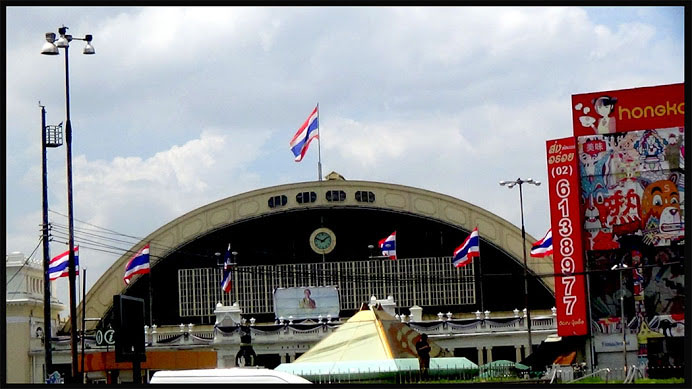 Bangkok Railway Station
Bangkok Railway Station
“Bangkok Railway Station, unofficially known as Hua Lamphong Station is the main railway station in Bangkok, Thailand. It is in the center of the city in the Pathum Wan District, and is operated by the State Railway of Thailand.
The station is officially referred to by the State Railway of Thailand as Krungthep Railway Station in Thai ‘Krungthep’ is the transliteration of the common Thai language name of Bangkok) and Bangkok Station in English.[1] Hua Lamphong is the informal name of the station, used by both foreign travellers and locals. The station is often named as Hua Lamphong in travel guide books and in the public press.[citation needed]
In other areas of Thailand the station is commonly referred to as Krungthep Station, and the name Hua Lamphong is not well-known.
In all documents published by the State Railway of Thailand (such as train tickets, timetables, and tour pamphlets) the station is uniformly transcribed as Krungthep in Thai.[1]”
For more information please visit the following link:
https://en.wikipedia.org/wiki/Bangkok_Railway_Station
 Advertising Poster near Bangkok Railway Station
Advertising Poster near Bangkok Railway Station
“Bangkok Railway Station, unofficially known as Hua Lamphong Station is the main railway station in Bangkok, Thailand. It is in the center of the city in the Pathum Wan District, and is operated by the State Railway of Thailand.
The station was opened on June 25, 1916 after six years’ construction. The site of the railway station was previously occupied by the national railway’s maintenance centre, which moved to Makkasan in June 1910. At the nearby site of the previous railway station a pillar commemorates the inauguration of the Thai railway network in 1897.
The station was built in an Italian Neo-Renaissance-style, with decorated wooden roofs and stained glass windows. The architecture is attributed to Turin-born Mario Tamagno, who with countryman Annibale Rigotti (1870–1968) was also responsible for the design of several other early 20th century public buildings in Bangkok. The pair designed Bang Khun Prom Palace (1906), Ananta Samakhom Throne Hall in the Royal Plaza (1907–15) and Suan Kularb Residential Hall and Throne Hall in Dusit Garden, among other buildings.
There are 14 platforms, 26 ticket booths, and two electric display boards. Hua Lamphong serves over 130 trains and approximately 60,000 passengers each day. Since 2004 the station has been connected by an underground passage to the MRT (Metropolitan Rapid Transit) subway system’s Hua Lamphong Station.”
The station is also a terminus of the Eastern and Oriental Express luxury trains.[2]
For more information please visit the following link:
https://en.wikipedia.org/wiki/Bangkok_Railway_Station
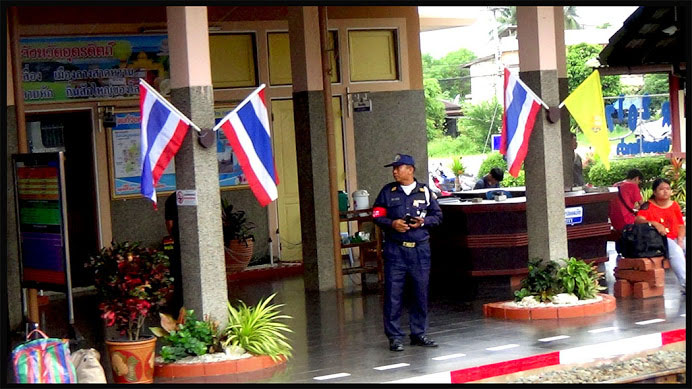 One of the Train Stations along the Way of Our Trip to Chiang Mai
One of the Train Stations along the Way of Our Trip to Chiang Mai
“Chiang Mai: Lanna sometimes written as “Chiengmai” or “Chiangmai”, is the largest city in northern Thailand. It is the capital of Chiang Mai Province and was a former capital of the Kingdom of Lan Na (1296–1768), which became the Kingdom of Chiang Mai, a tributary state of Siam from 1774 to 1899 and finally the seat of a merely ceremonial prince until 1939. It is 700 km (435 mi) north of Bangkok and is situated amongst the highest mountains in the country. The city sits astride the Ping River, a major tributary of the Chao Phraya River”
For more information please visit the following link:
https://en.wikipedia.org/wiki/Chiang_Mai
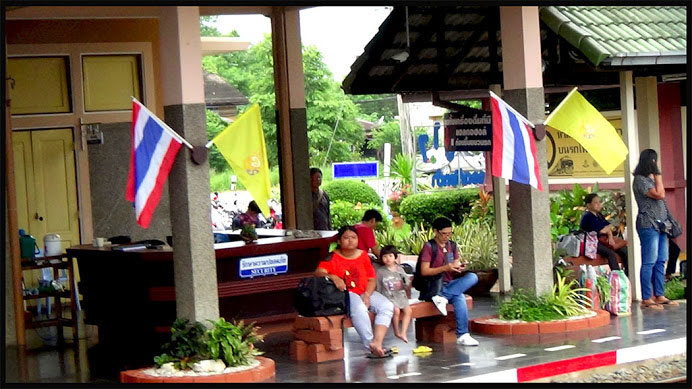 People were waiting for the Train at One of the Train Stations along the Way of Our Trip to Chiang Mai
People were waiting for the Train at One of the Train Stations along the Way of Our Trip to Chiang Mai
“Chiang Mai means “new city” and was so named because it became the new capital of the Lan Na kingdom when it was founded in 1296, succeeding Chiang Rai, the former capital founded in 1262.[1]:208–209
Chiang Mai gained prominence in the political sphere in May 2006, when the Chiang Mai Initiative was concluded between the ASEAN nations and the “+3” countries (China, Japan, and South Korea). Chiang Mai was one of three Thai cities contending for Thailand’s bid to host the World Expo 2020 (the others were Chonburi and Ayutthaya).[2] Ayutthaya, however, was the city ultimately chosen by the Thai Parliament to register for the international competition.[3][4]”
For more information please visit the following link:
https://en.wikipedia.org/wiki/Chiang_Mai
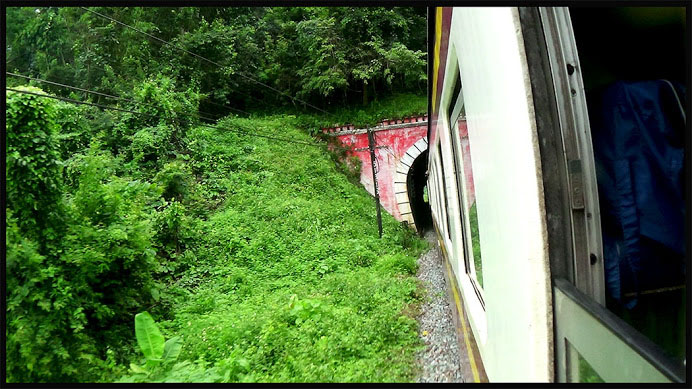 The Train went through the Tunnel of the Hill. It is Greener and more Hilly in the Northern part of Thailand.
The Train went through the Tunnel of the Hill. It is Greener and more Hilly in the Northern part of Thailand.
“Chiang Mai is subdivided into four wards (khwaeng): Nakhon Ping, Srivijaya, Mengrai, and Kawila. The first three are on the west bank of the Ping River, and Kawila is on the east bank. Nakhon Ping district comprises the north part of the city. Srivijaya, Mengrai, and Kawila consist of the west, south, and east parts, respectively. The city center—within the city walls—is mostly within Srivijaya ward.[9]”
For more information please visit the following link:
https://en.wikipedia.org/wiki/Chiang_Mai
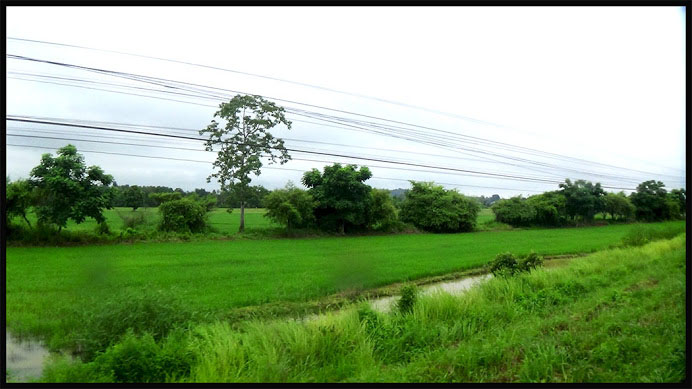 Rice Field in the middle plain of Thailand, the scenery along the Way of Our Trip to Chiang Mai
Rice Field in the middle plain of Thailand, the scenery along the Way of Our Trip to Chiang Mai
“Chiang Mai’s historic importance is derived from its close proximity to tthe Ping River and major trading routes.[7][8]
While officially the city (thesaban nakhon) of Chiang Mai only covers most parts of the Mueang Chiang Mai district with a population of 160,000, the city’s sprawl extends into several neighboring districts. The Chiang Mai Metropolitan Area has a population of nearly one million people, more than half the total of Chiang Mai Province.”
For more information please visit the following link:
https://en.wikipedia.org/wiki/Chiang_Mai
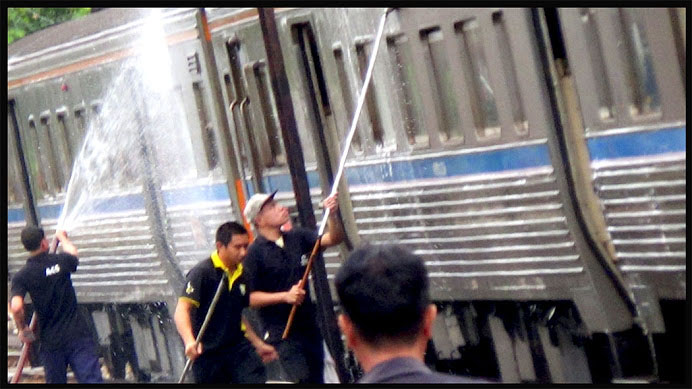 People were cleaning the Train at One of the Train Stations.
People were cleaning the Train at One of the Train Stations.
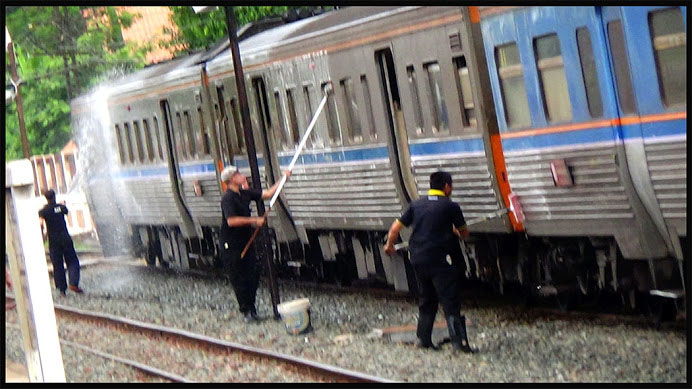 People were cleaning the Train at One of the Train Stations.
People were cleaning the Train at One of the Train Stations.
 “No Smoking Cigarettes or Drinking Alcohol on Train or in Station” The sign showing at one of the train station, the scenery along the Way of Our Trip to Chiang Mai
“No Smoking Cigarettes or Drinking Alcohol on Train or in Station” The sign showing at one of the train station, the scenery along the Way of Our Trip to Chiang Mai
Welcome To My Beloved Country, Thailand
Photograph by Ing-On Vibulbhan-Watts
“The city emblem shows the stupa at Wat Doi Suthep in its center. Below it are clouds representing the moderate climate in the mountains of Northern Thailand. There is a naga, the mythical snake said to be the source of the Ping River, and rice stalks, which refer to the fertility of the land.[17]”
For more information please visit the following link: https://en.wikipedia.org/wiki/Chiang_Mai
 We enjoyed seeing the greenery and little village in the valley surrounded by the hills.
We enjoyed seeing the greenery and little village in the valley surrounded by the hills.
“With the decline of the Lan Na Kingdom, the city lost importance and was occupied by the Burmese in 1556.[13] Chiang Mai formally became part of Siam in 1775 by an agreement with Chao Kavila, after the Thai King Taksin helped drive out the Burmese. Because of Burmese counterattacks, Chiang Mai was abandoned between 1776 and 1791.[14] Lampang then served as the capital of what remained of Lan Na. Chiang Mai then slowly grew in cultural, trading, and economic importance to its current status as the unofficial capital of Northern Thailand, second in importance only to Bangkok.[15]
The modern municipality dates to a sanitary district (sukhaphiban) that was created in 1915. It was upgraded to a municipality (thesaban) on 29 March 1935, as published in the Royal Gazette, Book No. 52 section 80. First covering just 17.5 km2 (7 sq mi), the city was enlarged to 40.2 km2 (16 sq mi) on 5 April 1983.[16]”
For more information please visit the following link:
https://en.wikipedia.org/wiki/Chiang_Mai
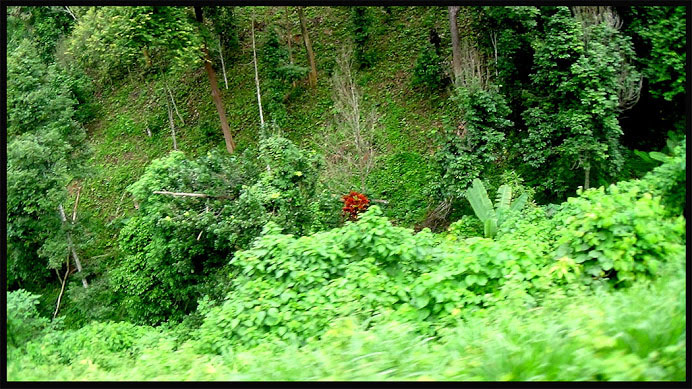 Looking down into the valley between the hills.
Looking down into the valley between the hills.
“Chiang Mai succeeded Chiang Rai as the capital of the Lan Na kingdom. Pha Yu enlarged and fortified the city, and built Wat Phra Singh in honor of his father Kham Fu.[1]:226–227 The ruler was known as the “chao”. The city was surrounded by a moat and a defensive wall since nearby Burma was a constant threat, as were the armies of the Mongol Empire, which only decades earlier had conquered most of Yunnan, China, and in 1292 overran the bordering Thai Lü kingdom of Chiang Hung”
For more information please visit the following link:
https://en.wikipedia.org/wiki/Chiang_Mai
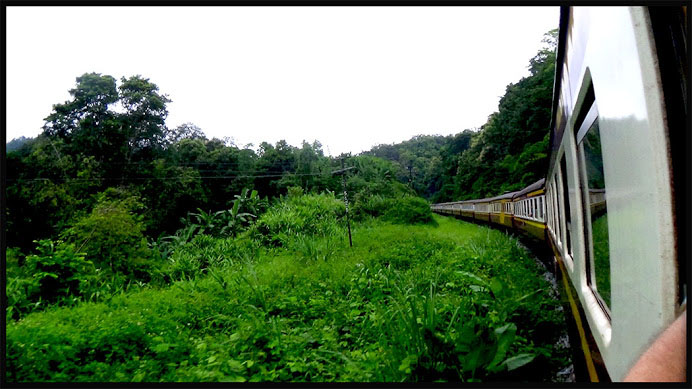 The train went on top of one of the hills.
The train went on top of one of the hills.
“King Mengrai founded the city of Chiang Mai (“new city”) in 1296[1]:209 on the site of an older city of the Lawa people called Wiang Nopburi.[10][11] Gordon Young, in his 1962 book The Hill tribes of Northern Thailand, mentions how a Wa chieftain in Burma told him that the Wa, a people who are closely related to the Lawa, once lived in the Chiang Mai valley in “sizeable cities”.[12]”
For more information please visit the following link:
https://en.wikipedia.org/wiki/Chiang_Mai
 The lovely greenery reflection on the quiet pond and far away hills. Welcome To My Beloved Country, Thailand
The lovely greenery reflection on the quiet pond and far away hills. Welcome To My Beloved Country, Thailand
Photograph by Ing-On Vibulbhan-Watts
“The northern center of the Meteorological Department has reported that low-pressure areas from China trap forest fire smoke in the mountains along the Thai-Myanmar border.[24] Research conducted between 2005 and 2009 showed that average PM10 rates in Chiang Mai during February and March were considerably above the country’s safety level of 120 ?g/m3, peaking at 383 ?g/m3 on 14 March 2007.[25] According to the World Health Organization (WHO), the acceptable level is 50 ?g/m3.[26]
To address the increasing amount of greenhouse gas emissions from the transport sector in Chiang Mai, the city government has advocated the use of non-motorised transport (NMT). In addition to its potential to reduce greenhouse gas emissions, the NMT initiative addresses other issues such as traffic congestion, air quality, income generation for the poor, and the long-term viability of the tourism industry.[27] It has been said that smoke pollution has made March “the worst month to visit Chiang Mai”.[28]”
or more information please visit the following link:
https://en.wikipedia.org/wiki/Chiang_Mai
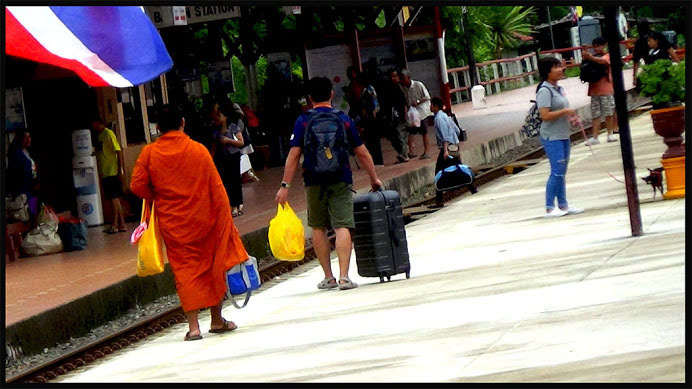 A Monk was walking under the waving Thai flag and other passengers leaving the train to their destination at one of the stations.
A Monk was walking under the waving Thai flag and other passengers leaving the train to their destination at one of the stations.
“A continuing environmental issue in Chiang Mai is the incidence of air pollution that primarily occurs every year towards the end of the dry season between February and April. In 1996, speaking at the Fourth International Network for Environmental Compliance and Enforcement conference—held in Chiang Mai that year—the Governor Virachai Naewboonien invited guest speaker Dr. Jakapan Wongburanawatt, Dean of the Social Science Faculty of Chiang Mai University, to discuss air pollution efforts in the region. Dr. Wongburanawatt stated that, in 1994, an increasing number of city residents attended hospitals suffering from respiratory problems associated with the city’s air pollution.[21]”
or more information please visit the following link:
https://en.wikipedia.org/wiki/Chiang_Mai
 We saw more corn fields in the northern area, near Chiang Mai.
We saw more corn fields in the northern area, near Chiang Mai.
“During the February–March period, air quality in Chiang Mai often remains below recommended standards, with fine-particle dust levels reaching twice the standard limits.[22]
According to the Bangkok Post, corporations in the agricultural sector, not farmers, are the biggest contributors to smoke pollution. The main source of the fires is forested area being cleared to make room for new crops. The new crops to be planted after the smoke clears are not rice and vegetables to feed locals. A single crop is responsible: corn. The haze problem began in 2007 and has been traced at the local level and at the macro-market level to the growth of the animal feed business. “The true source of the haze…sits in the boardrooms of corporations eager to expand production and profits. A chart of Thailand’s growth in world corn markets can be overlaid on a chart of the number of fires. It is no longer acceptable to scapegoat hill tribes and slash-and-burn agriculture for the severe health and economic damage caused by this annual pollution.” These data have been ignored by the government. The end is not in sight, as the number of fires has increased every year for a decade, and data shows more pollution in late-February 2016 than in late-February 2015.[23]”
For more information please visit the following link:
https://en.wikipedia.org/wiki/Chiang_Mai
 We saw mountain and hills far away, the clouds were hanging low over the top of the mountain,
We saw mountain and hills far away, the clouds were hanging low over the top of the mountain,
“Chiang Mai has a tropical wet and dry climate (Köppen Aw), tempered by the low latitude and moderate elevation, with warm to hot weather year-round, though nighttime conditions during the dry season can be cool and much lower than daytime highs. The maximum temperature ever recorded was 42.4 °C (108.3 °F) in May 2005.[18]”
For more information please visit the following link:
https://en.wikipedia.org/wiki/Chiang_Mai
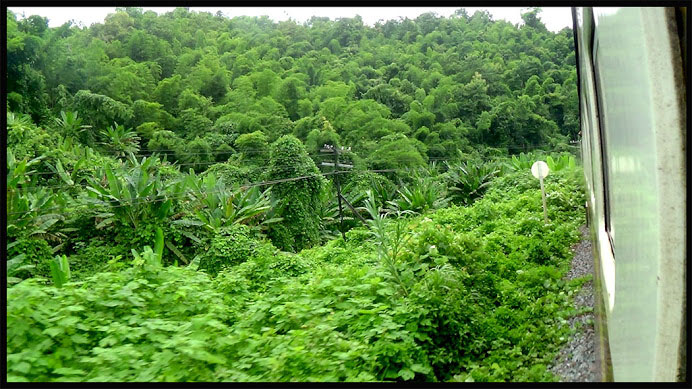 I thought we were on top of one of the hill because we saw the top of the greenery.
I thought we were on top of one of the hill because we saw the top of the greenery.
“Khantoke dinner is a century-old Lanna Thai tradition[41] in Chiang Mai. It is an elaborate dinner or lunch offered by a host to guests at various ceremonies or parties, such as weddings, housewarmings, celebrations, novice ordinations, or funerals. It can also be held in connection with celebrations for specific buildings in a Thai temple and during Buddhist festivals such as Khao Pansa, Og Pansa, Loi Krathong, and Thai New Year (Songkran).”
For more information please visit the following link:
https://en.wikipedia.org/wiki/Chiang_Mai
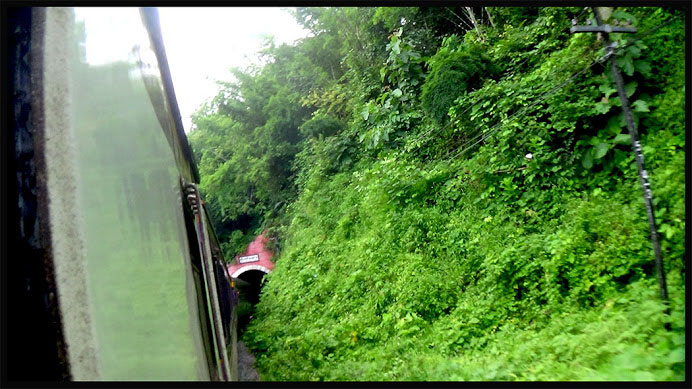 The train went through the hill by tunnel. I looked back and saw the end of train emerging from the tunnel.
The train went through the hill by tunnel. I looked back and saw the end of train emerging from the tunnel.
“Museums
• Chiang Mai City Arts and Cultural Center.
• Chiang Mai National Museum highlights the history of the region and the Kingdom of Lan Na.
• Tribal Museum showcases the history of the local mountain tribes.
• Mint Bureau of Chiang Mai or Sala Thanarak, Treasury Department, Ministry of Finance, Rajdamnern Road (one block from AUA Language Center) has an old coin museum open to the public during business hours. The Lan Na Kingdom used leaf (or line) money made of brass and silver bubbles, also called “pig-mouth” money. Nobody has been able to duplicate the technique of making pig-mouth money, and because the silver is very thin and breakable, good pieces are now very rare.[40]
• Bank of Thailand Museum”
For more information please visit the following link:
https://en.wikipedia.org/wiki/Chiang_Mai
 The train was very close to the hill as if the train was hugging the hill, the greenery appeared on the train window showing a nice reflection of the view.
The train was very close to the hill as if the train was hugging the hill, the greenery appeared on the train window showing a nice reflection of the view.
“Language
The inhabitants speak Kham Muang (also known as Northern Thai or Lanna). Historically, it is a dialect referred to as the Chiangsaen dialect (also a precursor Kingdom to Chiangmai and Chiangrai) still spoken in parts of northern Laos today, they speak this dialect among themselves, though Standard Thai is used in education and is understood by almost everyone. The script used to write this language, called Tua Mueang, is studied only by scholars, and the language is commonly written with the standard Thai alphabet.[39] English is used in hotels and travel-related businesses.”
Khantoke dinner, pig-mouth money, Loi Krathong, Songkran, Flower Festival, Chiangsaen dialect, Nam Tok Huai Kaeo, Doi Inthanon National Park, Doi Pha Daeng National Park, Chiang Dao National Park, Doi Luang Chiang Dao, Pha Deang, Chiang Mai University
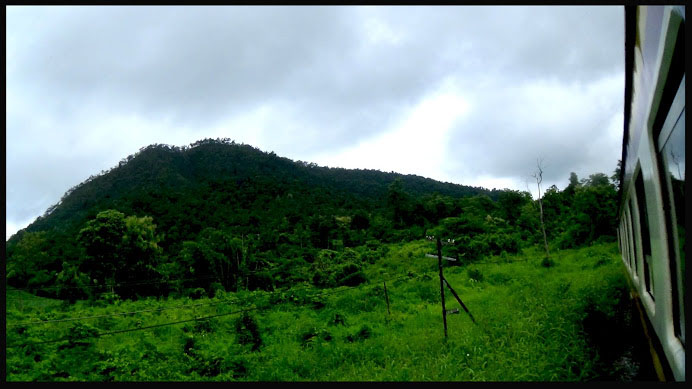 We were approaching a mountain and hills, the clouds were hanging low over the top of the mountain.
We were approaching a mountain and hills, the clouds were hanging low over the top of the mountain.
“Chiang Mai hosts many Thai festivals, including:
• Loi Krathong (known locally as Yi Peng), held on the full moon of the 12th month of the traditional Thai lunar calendar, being the full moon of the second month of the old Lanna calendar. In the Western calendar this usually falls in November. Every year thousands of people assemble floating banana-leaf containers (krathong) decorated with flowers and candles and deposit them on the waterways of the city in worship of the Goddess of Water. Lanna-style sky lanterns (khom fai or kom loi), which are hot-air balloons made of paper, are launched into the air. These sky lanterns are believed to help rid the locals of troubles and are also used to decorate houses and streets.
• Songkran is held in mid-April to celebrate the traditional Thai new year. Chiang Mai has become one of the most popular locations to visit during this festival. A variety of religious and fun-related activities (notably the indiscriminate citywide water fight) take place each year, along with parades and Miss Songkran beauty competition.
• Chiang Mai Flower Festival is a three-day festival held during the first weekend in February each year; this event occurs when Chiang Mai’s temperate and tropical flowers are in full bloom.
• Tam Bun Khan Dok, the Inthakin (City Pillar) Festival, starts on the day of the waning moon of the sixth lunar month and lasts 6–8 days.”
For more information please visit the following link:
https://en.wikipedia.org/wiki/Chiang_Mai
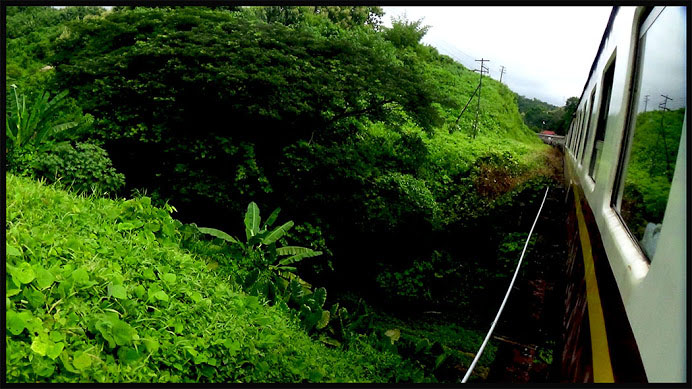 I felt a little nervous looking down the deep ravine with the two train tracks laying across between two hills, the scenery along the Way of Our Trip to Chiang Mai.
I felt a little nervous looking down the deep ravine with the two train tracks laying across between two hills, the scenery along the Way of Our Trip to Chiang Mai.
Welcome To My Beloved Country, Thailand
Photograph by Ing-On Vibulbhan-Watts
“Transportation
“Songthaew on Wua Lai Rd, Chiang Mai
Tuk-tuks near Tha Phae Gate, Chiang Mai
A number of bus stations link the city to Central, Southeast, and Northern Thailand. The Central Chang Puak terminal (north of Chiang Puak Gate) provides local services within Chiang Mai Province. The Chiang Mai Arcade bus terminal north-east of the city (which can be reached with a songthaew or tuk-tuk ride) provides services to over 20 other destinations in Thailand including Bangkok, Pattaya, Hua Hin, and Phuket. There are several services a day from Chiang Mai Arcade terminal to Mo Chit Station in Bangkok (a 10- to 12-hour journey).
The state railway operates 10 trains a day to Chiang Mai Station from Bangkok. Most journeys run overnight and take approximately 12–15 hours. Most trains offer first-class (private cabins) and second-class (seats fold out to make sleeping berths) service. Chiang Mai is the northern terminus of the Thai railway system.
Chiang Mai International Airport receives up to 28 flights a day from Bangkok (flight time about 1 hour 10 minutes) and also serves as a local hub for services to other northern cities such as Chiang Rai, Phrae, and Mae Hong Son. International services also connect Chiang Mai with other regional centers, including cities in other Asian countries.
The locally preferred form of transport is personal motorbike and, increasingly, private car.
Local public transport is via tuk-tuk, songthaew, or rickshaws. Local songthaew fare is usually 20–50 baht per person for trips in and around the city. For groups, the fare per person is less. Tuk-tuk fare is usually at least 60–100 baht per trip (the vehicles are comfortable for two passengers, but some can squeeze in four passengers); fares increase with distance.”
For more information please visit the following link:
https://en.wikipedia.org/wiki/Chiang_Mai
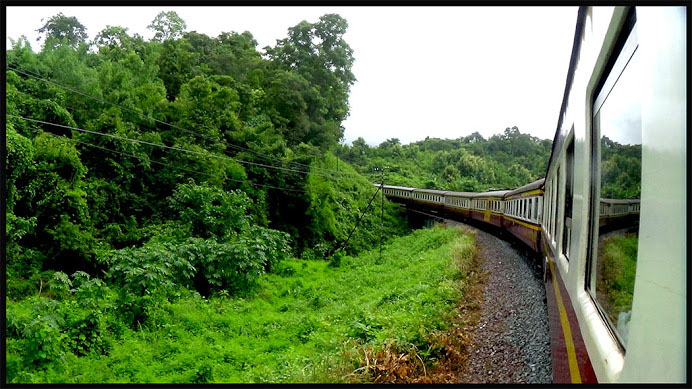 The train was very close to the hill as if the train was hugging the hill, the greenery appeared on the train window showing a nice reflection of the view.
The train was very close to the hill as if the train was hugging the hill, the greenery appeared on the train window showing a nice reflection of the view.
“ Language
The inhabitants speak Kham Muang (also known as Northern Thai or Lanna). Historically, it is a dialect referred to as the Chiangsaen dialect (also a precursor Kingdom to Chiangmai and Chiangrai) still spoken in parts of northern Laos today, they speak this dialect among themselves, though Standard Thai is used in education and is understood by almost everyone. The script used to write this language, called Tua Mueang, is studied only by scholars, and the language is commonly written with the standard Thai alphabet.[39] English is used in hotels and travel-related businesses.”
For more information please visit the following link:
https://en.wikipedia.org/wiki/Chiang_Mai
 After we had our excitement of seeing the long train go over the deep ravine, I glanced back to the end of the train. It impressed us to see the curve of the train tracks that wrapping around the hill.
After we had our excitement of seeing the long train go over the deep ravine, I glanced back to the end of the train. It impressed us to see the curve of the train tracks that wrapping around the hill.
“Recreation
• The Chiang Mai Zoo, the oldest zoo in Northern Thailand, sprawls over an enormous tract of land.
• Shopping: Chiang Mai has a large and famous night bazaar for local arts and handicrafts. The night markets extend across several city blocks along footpaths, inside buildings and temple grounds, and in open squares. A handicraft and food market opens every Sunday afternoon until late at night on Rachadamnoen Road, the main street in the historical centre, which is then closed to motorised traffic. Every Saturday evening a handicraft market is held along Wua Lai Road, Chiang Mai’s silver street[43] on the south side of the city beyond Chiang Mai Gate, which is then also closed to motorised traffic.[44]
• Thai massage: The back streets and main thoroughfares of Chiang Mai have an abundance and variety of massage parlours which offer anything from quick, simple, face and foot massages, to month-long courses in the art of Thai massage.
• Thai cookery: A number of Thai cooking schools have their home in Chiang Mai (see also Thai food).
• For IT shopping, Pantip Plaza just south of Night Bazaar, as well as Computer Plaza, Computer City, and Icon Square near the north-western corner moat, and IT City department store in Kad Suan Kaew Mall are available.
• Horse racing: Every Saturday starting at 12:30 there are races at Kawila Race Track. Betting is legal”
For more information please visit the following link:
https://en.wikipedia.org/wiki/Chiang_Mai
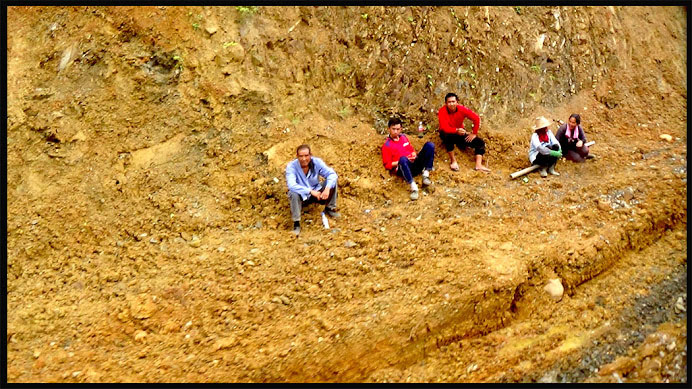 It was nice to see the workers sitting near by the train tracks smiling to us.
It was nice to see the workers sitting near by the train tracks smiling to us.
“Nature
Nam Tok Huai Kaeo (lit. “Crystal Creek Waterfall”) lies at the foot of Doi Suthep on the western edge of the city
• Nearby national parks include Doi Inthanon National Park, which includes Doi Inthanon, the highest mountain in Thailand
• Doi Pui- Doi Suthep National Park begins on the western edge of the city. An important and famous tourist attraction, Wat Doi Suthep Buddhist temple located near the sumit of Doi Suthep, can be seen from much of the city and its environs.
• Doi Pha Daeng National Park, or more commonly Chiang Dao National Park which includes Doi Luang Chiang Dao and Pha Deang mountain near the border with Myanmar.
• Hill tribe tourism and trekking: Many tour companies offer organized treks among the local hills and forests on foot and on elephant back. Most also involve visits to various local hill tribes, including the Akha, Hmong, Karen, and Lisu.[42]
• Queen Sirikit Botanic Garden”
For more information please visit the following link:
https://en.wikipedia.org/wiki/Chiang_Mai
 We saw a part of the hill that was cut down for laying train tracks, the scenery along the Way of Our Trip to Chiang Mai
We saw a part of the hill that was cut down for laying train tracks, the scenery along the Way of Our Trip to Chiang Mai
Welcome To My Beloved Country, Thailand
Photograph by Ing-On Vibulbhan-Watts
“Education
Chiang Mai has several universities, including Chiang Mai University, Chiangmai Rajabhat University, Rajamangala University of Technology Lanna, Payap University, Far Eastern University, and Maejo University, as well as numerous technical and teacher colleges. Chiang Mai University was the first government university established outside of Bangkok. Payap University was the first private institution in Thailand to be granted university status.”
For more information please visit the following link:
https://en.wikipedia.org/wiki/Chiang_Mai
Leave a Reply